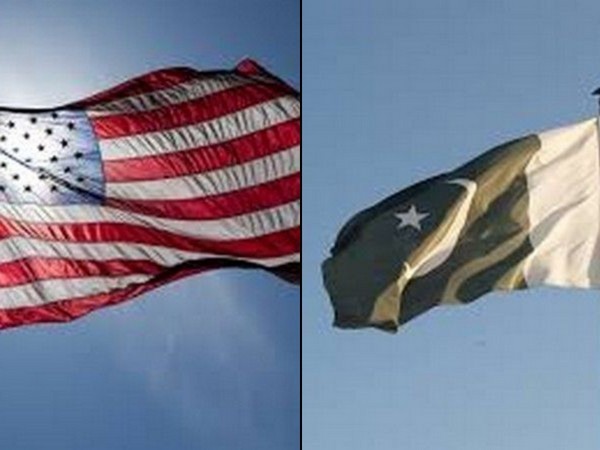
Is China continuing with its efforts to help Pakistan in developing nuclear and ballistic missiles? This was brought into the open as, of the total 27 entities and individuals blacklisted by the US administration recently more than a dozen belonged to entities which were operating in China and Pakistan on Islamabad’s nuclear and ballistic missile programme.
Citing national and foreign policy concerns, the US government on November 24, put over two dozen entities from China, Japan, Russia, Pakistan and Singapore on its trade blacklist.
For China and Pakistan watchers in particular, this was a short of an alarming development and it reminded them of the nexus between the two countries on the nuclear front. Beijing had clandestinely provided Islamabad with highly enriched uranium, ring magnets necessary for processing the uranium. It passed the entire design of a nuclear weapon to Pakistan in the early 1980s.
In the 1990s, China violated its pledge to abide by the guidelines of the Missile Technology Control Regime (MTCR) when it sold to Pakistan technology related to the nuclear-capable M-11 ballistic missile.
“Pakistan’s nuclear bomb, in fact, is widely believed to be based on Chinese blueprints. Worse, in 1990 and 1992, China provided Pakistan with nuclear-capable M-11 missiles that have a range of 186 miles. China reportedly provided the technology to Pakistan to build a missile that could strike targets within a 360-mile range,” John Dori and Richard Fisher in their thought provoking article published by The Heritage Foundation, a Washington DC-based think tank said.
Enraged by China’s transfer of missile technology to Pakistan in violation of the MTCR guidelines, the US administration under President Bill Clinton imposed sanctions on China in 1993. The sanctions were rolled back after China assured that it would adhere to the MTCR guidelines. But soon this assurance was crushed to smithereens by China. It continued with transfer of nuclear weapons technology to Pakistan through a narrow interpretation of the MTCR guidelines. In 2004, it transferred technology to Pakistan for building nuclear reactors in Karachi.
On March 14, 2018, the Chinese Academy of Sciences (CAS) in a rare declaration maintained that the country’s Institute of Optics and Electronics had sold Pakistan a powerful tracking system that could speed up the Pakistanis military’s development of multi-warhead missiles. China was the first country to export such sensitive equipment to Pakistan which got technology for its solid-fuel ballistic missile Shaheen III, which has a range of 2,750 km, from Beijing. Experts have identified significant similarities between the designs of Shaheen missiles and China’s DF-11.
In March 2018, the US Defence Intelligence Agency confirmed that Pakistan had conducted tests of a Multiple Independent Reentry Vehicle (MIRV) capable missile, Ababeel. Significantly, MIRV capability allows a ballistic missile to send several separately targeted nuclear warheads on their separate ways. China later confirmed that it assisted Pakistan in developing MIRV capabilities.
However, a new chapter was added to the long-enduring military ties between Beijing and Islamabad when China on November 8 delivered the most advanced frigate to the Pakistan Navy. The frigate is the largest warship China has ever exported. Earlier, China handed over VT-4 battle tanks to the Pakistan Army.
The Pakistan Armed Forces’ media and public relations wing, Inter-Services Public Relations had described VT-4 battle tank as a “modern tank” equipped with advanced armour protection, manoeuvrability, firepower capabilities. China also partners with the Pakistan Air Force to build JF-17 Thunder fighter aircraft.
China and Pakistan’s mutual desire to deepen their strategic engagement received a boost when Chinese Defence Minister General Wei Fengshe visited Islamabad in late November 2020. During that visit, the two countries signed a Memorandum of Understanding (MoU) aimed at strengthening defence cooperation between the Chinese People’s Liberation Army and the Pakistan Army.
The development was described by China as a desire to push the mil-to-mil relationship to a higher level, so as to jointly cope with various risks and challenges, firmly safeguarding the sovereignty and security interests of the two countries. China has always been found to be a ready provider to Pakistan’s quest for nuclear weapons. As per a report of the SIPRI Yearbook 2020, Pakistan possesses 160 deployed warheads. Experts term this as a product of an unholy alliance between China and Pakistan.
While it is posing a strong challenge to global security, still what needs to be done is to stop China and Pakistan immediately as their quest for missile and military hardware knowhow from US, Europe and Japan has taken a speed in recent years. Amid this, how far effective remains blacklisting of Chinese and Pakistani individuals and entities by the US Commerce Department, will have to be seen and assessed.
However, BBC said the blacklisting by the US Commerce Department will help “prevent American technology from supporting the development of Chinese military advancement” and activities of non-proliferation concerns like Pakistan’s unsafeguarded nuclear activities or ballistic missile programme.
On April 29, 2021, Director of US Defence Intelligence Agency Lt. Gen. Scott D Berrier told the Congress that China will have basically modernized its military in just six years. He also told the Congress that China aims to introduce the most disruptive military technologies by 2030-2035.
By 2027, the Director of US Defence Intelligence Agency said, China expects to be able to win a small number of brief but high-level military conflicts—including the forcible unification of Taiwan, while deterring, dissuading or defeating any third-party military intervention. By 2050, China plans to be the dominant world military power, Lt. Gen. Scott D Berrier told the Congress.








